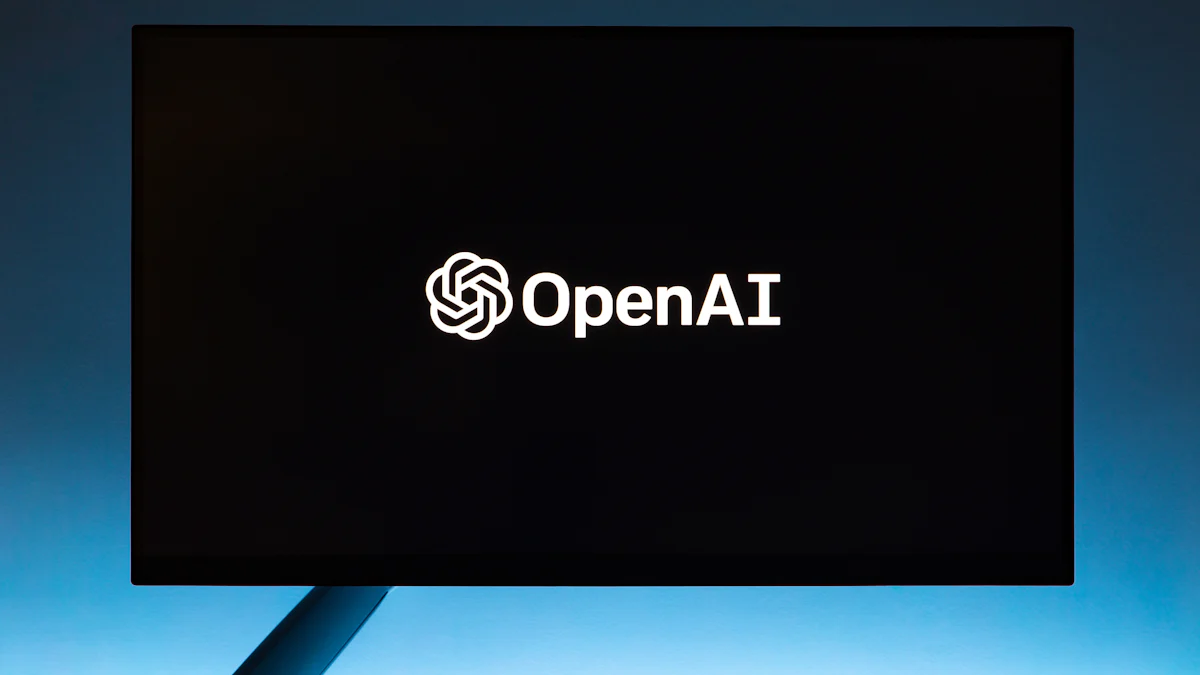How Chinese Developers Are Adapting to OpenAI's Block

OpenAI's decision to restrict access in China has caused significant disruption. Chinese developers scramble as OpenAI blocks access in China. This restriction holds immense significance for the developers who relied on OpenAI's technology. Understanding the adaptive strategies employed by these developers is crucial. SenseTime AI advancements, particularly SenseNova 5.5 features, have emerged as a key response. The OpenAI China ban has led to a surge in Chinese AI industry growth. Companies offer free AI tokens and AI technology migration services to attract users. The AI competition China vs US intensifies, highlighting generative AI market trends.
Chinese Developers Scramble as OpenAI Blocks Access in China

Immediate Reactions from Chinese Developers
Initial Shock and Concerns
The OpenAI China ban caused immediate shock among developers. Many relied heavily on OpenAI's technology for their projects. The sudden restriction disrupted workflows and raised concerns about future access to advanced AI tools. Developers feared losing competitive edge and innovation capabilities. The ban highlighted the vulnerability of relying on foreign technology.
Early Adaptation Efforts
Developers quickly sought alternatives to mitigate the impact. SenseTime AI advancements emerged as a key solution. Introducing SenseNova 5.5 features provided a viable option. SenseTime offered AI technology migration services to ease the transition. Other companies, such as Baidu and Tencent, also stepped in. Baidu Ernie 3.5 free tokens and Tencent Cloud AI tokens attracted developers. Zhipu AI free tokens further incentivized the switch. These efforts aimed to retain talent and maintain momentum in the Chinese AI industry growth.
Challenges Faced
Access to OpenAI's Technologies
The block restricted access to OpenAI's cutting-edge models. Developers faced difficulties in obtaining similar quality tools. Advanced AI semiconductors export restrictions compounded the problem. The lack of access hindered progress in developing sophisticated AI applications. The gap between local and international AI capabilities widened.
Collaboration and Innovation Hurdles
The ban disrupted collaborative efforts with global partners. AI competition China vs US intensified as a result. Developers struggled to maintain innovation without international input. The need for Chinese AI models innovation became more pressing. Companies focused on creating independent solutions. The generative AI market trends shifted towards domestic development. AI safety and equitable access remained critical concerns. Ensuring fair distribution of AI resources posed additional challenges.
Adaptive Strategies Employed

Development of Alternative Solutions
Local AI Platforms and Tools
Chinese developers scramble as OpenAI blocks access in China. SenseTime introduced SenseNova 5.5 features to address the gap. This model offers object identification, task feedback, and text summarization. SenseTime's AI technology migration services help users to transition smoothly. Other companies like Baidu and Tencent also stepped up. Baidu Ernie 3.5 free tokens and Tencent Cloud AI tokens attracted many developers. These efforts aim to maintain momentum in the Chinese AI industry growth.
Alibaba Cloud's Bailian platform emerged as another alternative. Bailian provides over 20 million free AI tokens offers. The platform also includes exclusive migration services. This initiative helps developers affected by the OpenAI China ban. Chinese developers scramble as OpenAI blocks access in China, but local platforms fill the void. These solutions ensure continued progress in AI development.
Open-Source Contributions
Chinese developers scramble as OpenAI blocks access in China. Many turned to open-source projects. Contributions to platforms like GitHub increased. Developers shared code and resources. This collaboration fostered innovation. Open-source projects helped bridge the gap left by OpenAI. Chinese AI models innovation became a focus. Developers aimed to create competitive alternatives.
The generative AI market trends shifted towards open-source solutions. Companies like Zhipu AI offered incentives. Zhipu AI free tokens encouraged participation. These efforts promoted community-driven development. Open-source contributions played a crucial role. Chinese developers scramble as OpenAI blocks access in China, but open-source projects provided a lifeline.
Collaboration with Domestic Companies
Partnerships and Alliances
Chinese developers scramble as OpenAI blocks access in China. Domestic companies formed partnerships to address the challenges. SenseTime collaborated with other AI firms. These alliances aimed to pool resources and expertise. SenseTime AI advancements benefited from these collaborations. The SenseTime vs OpenAI comparison highlighted the strengths of local solutions.
Baidu, Tencent, and Alibaba also formed alliances. These partnerships focused on creating robust AI ecosystems. The AI competition China vs US intensified. Chinese companies aimed to close the performance gap. Advanced AI semiconductors' export restrictions posed challenges. However, domestic partnerships helped mitigate these issues. Chinese developers scramble as OpenAI blocks access in China, but alliances provided support.
Knowledge Sharing and Training
Chinese developers scramble as OpenAI blocks access in China. Knowledge sharing became essential. Companies organized training sessions and workshops. SenseTime offered dedicated support for migrating from OpenAI services. These initiatives aimed to upskill developers. AI safety and equitable access remained critical concerns. Training programs addressed these issues.
Tencent and Baidu also launched training initiatives. These programs focused on Chinese AI models innovation. Developers learned to create independent solutions. The generative AI market trends emphasized self-reliance. Chinese developers scramble as OpenAI blocks access in China, but training programs ensured continued progress.
Broader Implications for the AI Industry
Shifts in AI Research and Development
Focus on Independent Innovation
The OpenAI China ban has driven a renewed focus on independent innovation within the Chinese AI sector. Companies like SenseTime have made significant strides with SenseTime AI advancements. Introducing SenseNova 5.5 features showcases the capability to identify objects, provide task feedback, and summarize text efficiently. This push for self-reliance aims to reduce dependency on foreign technology and foster Chinese AI models innovation.
Increased Investment in AI
The restrictions have led to a surge in Chinese AI industry growth. Investments in AI research and development have increased significantly. Companies such as Baidu and Tencent offer incentives like Baidu Ernie 3.5 free tokens and Tencent Cloud AI tokens to attract developers. These initiatives aim to accelerate progress and maintain momentum despite the advanced AI semiconductors export restrictions. The influx of resources supports the creation of competitive alternatives to OpenAI's models.
Long-term Effects on Global AI Landscape
Competitive Dynamics
The AI competition China vs US has intensified due to the recent developments. Chinese companies have stepped up their game, offering free AI tokens offers and AI technology migration services to lure former OpenAI users. The SenseTime vs OpenAI comparison highlights the strengths of local solutions, such as SenseNova 5.5 features. These efforts aim to close the performance gap and establish China as a formidable player in the global AI arena.
Potential for New Market Leaders
The departure of OpenAI from the Chinese market has opened opportunities for new leaders to emerge. Companies like SenseTime, Baidu, and Alibaba have positioned themselves at the forefront of generative AI market trends. The provision of Zhipu AI free tokens and other incentives encourages developers to adopt domestic solutions. This shift promotes AI safety and equitable access, ensuring fair distribution of AI resources. The landscape now favors those who can innovate and adapt quickly, potentially leading to new market leaders in the AI industry.
Chinese developers have adopted several strategies to counter the OpenAI China ban. SenseTime AI advancements, including SenseNova 5.5 features, have provided viable alternatives. Companies like Baidu and Tencent offer free AI tokens and AI technology migration services. The Chinese AI industry growth has accelerated despite advanced AI semiconductors export restrictions.
The AI competition China vs US has intensified. Generative AI market trends now favor domestic innovation. The SenseTime vs OpenAI comparison highlights the strengths of local solutions. Incentives like Baidu Ernie 3.5 free tokens, Tencent Cloud AI tokens, and Zhipu AI free tokens promote AI safety and equitable access.
The future of AI development in China looks promising. Independent innovation will drive progress. Chinese AI models innovation will continue to close the performance gap with global counterparts.
See Also
The Future of OpenAI's Leading Artificial Intelligence Model
Figma AI: Improving Design through Innovative Tools
Reasons Behind Elon Musk's Withdrawal from Lawsuit Against OpenAI and Sam Altman
Unlocking ChatGPT's Memory Feature: Enhancing Your AI Journey
Understanding the Debate: Perplexity AI's Challenge with Content Duplication

